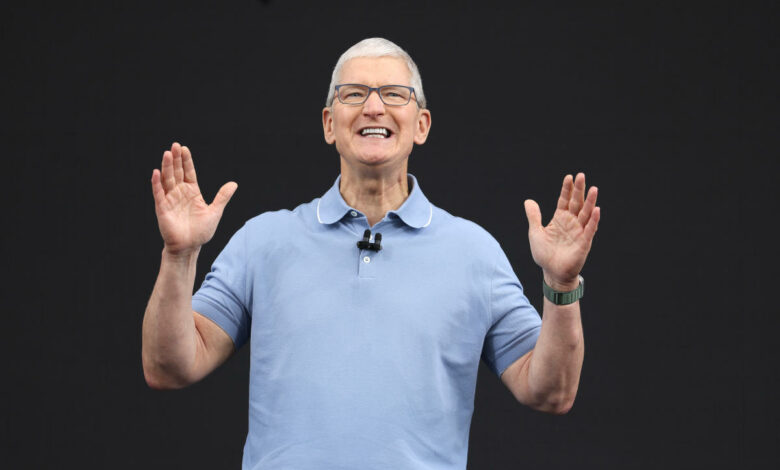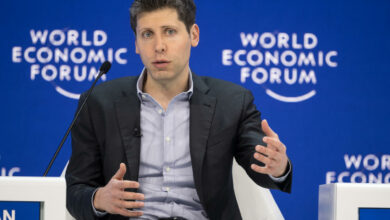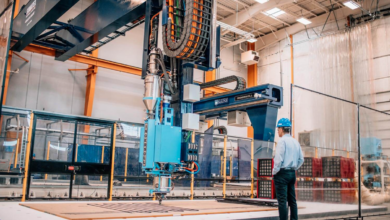The Apple Car never felt real

Apple has reportedly pulled down the shutters on Project Titan, its initiative to build the future of transportation. If the reports are accurate, the project chewed through billions of dollars and several high-profile leaders as its mission shifted and shifted again. What may have started as a control-free autonomous vehicle was eventually scaled down to a generic EV but, ya know, made by Apple. But, I’ll be honest, I never believed we’d see an Apple Car in the real world, because it seemed so impossibly far-fetched as to be fictional.
I’m not saying Titan itself didn’t exist, because every company has speculative projects, and I’m sure the reporting around what it achieved is accurate — Tim Cook definitely wrote “Car?” on a whiteboard at some point. If any company could walk in, learn the skills needed to build and launch a car and do it well (and profitably), it would be Apple. Other tech companies, like Sony, are making a real noise about entering the field, albeit in partnership with Honda. But, from a lot of logical angles, the idea that Apple would start making cars was impossible to fathom.
There’s a line in The Unbearable Lightness of Being where kitsch – a German word for bad or tacky art – is defined as a denial of the realities of life. Apple fits that description because while it’s wildly successful, it’s often despite decisions made that fly in the face of common sense. A watch that lasts for less than a day on a charge. A slippery, easily-dropped phone with a glass front and back that’s nightmarishly difficult to repair. A mouse that is still being sold with the charging port on its underside so you can only charge it when it’s not in use.
Even the most environmentally-friendly car still needs oil and grease to lubricate its workings, wheels that leave rubber on the road, brake pads that wear down. Seats that have to deal with spilled coffee and toddler vomit when you’re on a long road trip, the grime you only seem to find when you’re loading IKEA boxes into your trunk. Can you imagine Apple’s design team, who were behind the FineWoven case, who had to be dragged kicking and screaming toward bigger batteries, USB-C and waterproofing, thinking about such considerations?
Not to mention that while Apple can exert a lot of control over its devices now, cars aren’t so neatly closed off. Imagine how hard it would be for a company obsessed with control to cede so much to the auto shops of the world. Yes, you need to take your Tesla back for major repairs but can you imagine not being able to replace your tires when you get a flat? Unless, of course, Apple is planning to build garages in every major population center to overcharge you when it comes time to get an oil change.
And that’s before you get to the idea that Apple, who is quite obsessive about its brand, would have its logo plastered on the internet every time one of its cars so much as kissed a lamppost. Car accidents are currently an unfortunate fact of life that we, as a society, are not prepared to tackle the way we should. But all it would take is one fatality in an Apple car and the company would be demonized — and opened up to a raft of lawsuits all looking to get a piece of Apple’s cash pile.
A car also would muddy the company’s stance on environmental matters, and I can already picture the internal contortions. The executives driving their convertible Mercedes into Apple Park’s rarified subterranean parking garage would, I’m sure, quite like an Apple car. But I imagine the company’s teams who have to look at figures around energy consumption, emissions and climate change don’t. If Apple’s fine words about looking after the environment mean anything, it would throw its weight and expertise behind something better like scooters or e-bikes.
I’ve also struggled to fathom out how Apple would justify charging $100,000 for a limited-run EV when its real wins have come in the mass market. EVs take enormous amounts of capital and labor to assemble and it’s nowhere near as profitable as what Apple does today. In Q3 of 2023, WV — the world’s biggest car maker — made a net profit of about $4.7 billion, or about a quarter of what Apple made in the same period. How many luxury EVs would Apple be able to get out of the door and how many would it need to sell in order to justify that initial investment?
In fact, I suspect a lot of people piled a lot of unreasonable hopes on Project Titan’s shoulders despite Apple’s repeated scaling back. ‘We’ll make a car without a wheel, it’ll be great,’ you can imagine them saying, ‘okay, maybe it’ll have a wheel…’ they added, years later, ‘oh okay so, how about it’s just a car that’s not as autonomous as a Mercedes.’ It hardly screams the sort of class-leading ambitions you normally see with an Apple product, does it?
And yes, there may have been lots of pretty renders of what an Apple car would look like made by talented graphic designers looking to bulk out their portfolio. And lots of wishful chat on social media about Apple buying another EV maker like Tesla or Rivian to slap its brand on top of — despite the fact that Apple buying a name-brand company outright has only happened once or twice in a decade. But, until the NDAs lapse and we get a tell-all book with internal imagery, I’m going to say that, despite the reported billions of dollars poured into it, the Apple Car never got close to being a real thing.
Source link




